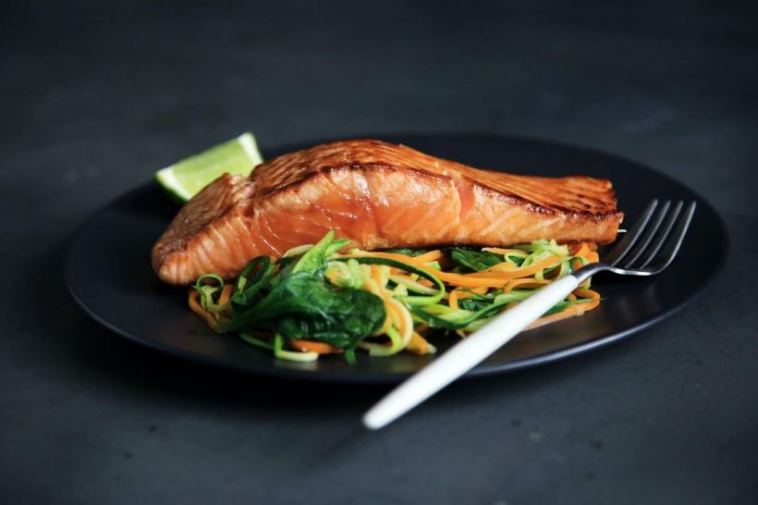- Like
- SHARE
- Digg
- Del
- Tumblr
- VKontakte
- Flattr
- Buffer
- Love This
- Save
- Odnoklassniki
- Meneame
- Blogger
- Amazon
- Yahoo Mail
- Gmail
- AOL
- Newsvine
- HackerNews
- Evernote
- MySpace
- Mail.ru
- Viadeo
- Line
- Comments
- Yummly
- SMS
- Viber
- Telegram
- JOIN
- Skype
- Facebook Messenger
- Kakao
- LiveJournal
- Yammer
- Edgar
- Fintel
- Mix
- Instapaper
- Copy Link
Introduction
Every year, fad diets come and go. But every now and then, one will stick and prove it has popular support or substantial scientific backing. Over the past few years, the ketogenic diet has become a widespread tool for weight loss.
Though the keto diet is popular, that doesn’t mean it’s easy. And many celebrities and social media influencers on the diet show off the end results but don’t share the challenging journey.
If you’re considering starting the keto diet, it’s essential that you understand the diet’s purpose and have realistic expectations. Otherwise, you can set yourself up for disappointment and discouragement.
So, what is the keto diet all about?
Ketosis and the Guiding Principles of the Keto Diet
The ketogenic diet has one central principle: if you cut carbohydrates and replace them with healthy fats, you can reach the fat-burning state of ketosis.
The mechanics of the diet are relatively straightforward. In the absence of carbs, the body can use ketones as an alternative energy source. How do you produce ketones?
By consuming medium-chain triglycerides, a type of fat with just the right molecular size. The medium-length carbon chains on MCTs make the fat easier to absorb than their long-chain triglyceride (LCT) counterpart. When consumed, MCTs go straight to the liver, which converts them to ketones.
Once you understand the keto diet, you should consider whether or not a low-carb, high-fat diet will work for you. Consider discussing the diet with a doctor or nutritionist familiar with your lifestyle and medical history.
Keto Diet Dos and Don’ts
People on the keto diet often turn poultry and seafood for energy-boosting protein. Fatty fish, in particular, is a favorite for keto diets because they have very few (if any) carbs and contain vitamin B other minerals like potassium and zinc.
Nuts and seeds are rich in essential fatty acids, and on this low-carb diet, you can enjoy many vegetables, such as avocado, tomato, onions, peppers, and spinach.
However, any refined carbs, such as pasta, grains, and bread, are off-limits. You should also stay away from sugar, legumes, potatoes, root vegetables, alcohol, and fruits with substantial carbs.
Tips and Tools for Success
- Embrace Meal Prep or a Food Diary- Maintaining a food diary is a great way to keep track of your meals. Also, meal prepping can help you create a weekly plan and stick to it instead of waiting until the last minute and eating foods that aren’t keto-friendly.
- Don’t Forget to Exercise- Although your diet plays a significant role in weight loss or maintenance, you still need to workout to reach your goals. Not only does exercising keep you strong, but it also helps to burn fat so the body doesn’t store it away.
- Use Supplements for Assistance- There are plenty of supplements you can include in your diet to promote ketosis. For example, you can add coconut based MCT oil to your favorite foods and beverages to help prompt ketosis.
- Listen to Your Body- Following the ketogenic diet may require a complete transformation of your eating habits. To make it easier, slowly incorporate aspects of the diet instead of cutting out carbs cold turkey.
- Prioritize Protein- Protein should play a significant role in your diet because your body will need protein to strengthen and build muscles as you lose fat, provided that you exercise and weight train.
- Drink More Water- Drinking sufficient water doesn’t just keep you hydrated throughout the day; it also stimulates your metabolism and may help suppress your appetite, making weight loss easier.
Possible Side Effects of the Keto Diet
Like all diets, the ketogenic has possible negative side effects, and it isn’t right for everyone. For example, you may feel fatigued, light-headed, or dehydrated due to a loss of electrolytes, which can lead to kidney damage.
If you notice recurrent symptoms, including high blood pressure, you may need to stop the diet or seek medical help. To prevent this, you should consult your doctor before starting the diet and educate yourself about the potential side effects and how to spot them.
The Bottom Line
If you’re planning on starting the keto diet, make sure that you consult a nutritionist first. Once they give you the green signal, you can begin meal planning, and you can also find friends who are also on the keto diet. This will help you share motivation and positivity on your journey.
About Theresa Duncan
Originally from Detroit, MI, Theresa has been offering health and fitness advice for the last 30 years while working as an engineer. She decided to turn her passion into a profession, and finds nothing more satisfying than helping others reach their health and fitness goals.

